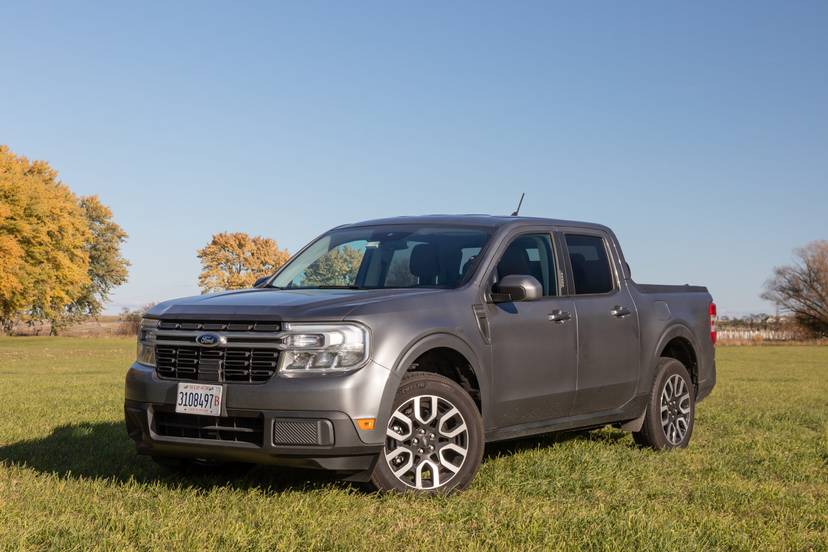
Late last year, a new hybrid version of the redesigned Toyota RAV4 improbably proved the fun choice for the SUV. Its chief rival, the new Ford Escape Hybrid, might deserve the same banner: It’s fun to drive, reasonably powerful and nearly as spacious as the non-hybrid Escape. Whether it’s as efficient as its Toyota rival remains to be seen, as official EPA mileage is still pending. But if Ford hits its target, the Escape Hybrid should come close to the hybrid RAV4.
Related: 2020 Ford Escape Review: Better on the Big Stuff
In redesigning the Escape for 2020, Ford returned an Escape Hybrid to the lineup for the first time since 2012. At the automaker’s Kentucky media preview, I drove hybrid and non-hybrid examples of the SUV, which go on sale in the fall of 2019. (Per our ethics policy, Cars.com pays for its own airfare and lodging at such automaker-sponsored events). A plug-in hybrid comes in the spring of 2020, but Ford didn’t furnish any examples to test.
I’ll focus on the Escape Hybrid here, but you can check out our full take on the non-hybrid Escape in a separate story.
Smooth Power
The Escape Hybrid combines a non-turbocharged 2.5-liter four-cylinder with two electric motors that draw juice from a 1.1-kilowatt-hour battery under the floor. The combination makes 200 hp total, and the combination proved sprightly: Even with three adults aboard, a front-drive Escape Hybrid tackled moderate inclines with power to spare. Power comes with minimal delay when you press the accelerator, and the SUV feels reasonably punchy at full bore — closer to the non-hybrid Escape’s turbo 2.0-liter engine than its base engine, a turbo 1.5-liter. Transitions between engine and electric power are seldom noticeable, and Ford says electric propulsion is available at speeds as high as 85 mph.
That said, your experience may vary, as my driving impressions came using 93-octane premium fuel. Ford rates power figures for the hybrid using 87-octane regular. David Bevan, a technical specialist for electrified powertrain calibrations, said at the Kentucky event the Escape Hybrid would make more power on premium but declined to specify how much.
Like non-hybrid variants, the 2020 Escape Hybrid has light, precise steering. Our well-equipped test car, which rode 19-inch wheels and P225/55R19 tires, exhibited good shock absorption but some busyness at highway speeds. (Seventeen-inch wheels and higher-profile tires are available on lower trim levels.) Characteristic of the regenerative brakes in many hybrids, the Escape Hybrid has somewhat bricklike pedal feel, with strong resistance. It’s little worse than the grabby brakes in the non-hybrid Escape, however, and it’s more forgivable here.
EPA estimates for the Escape Hybrid are still pending, but Daniel Kok, Ford’s electric powertrain manager for hybrids, said the automaker targets 50 percent better mileage than the outgoing front-wheel-drive 1.5-liter Escape. That would mean around 39 mpg combined with FWD, a figure that lands in RAV4 Hybrid territory. Toyota might still have bragging rights once the numbers come, as the RAV4 Hybrid has standard AWD. The Escape Hybrid’s optional AWD adds around 150 pounds, which could knock down its EPA rating.
Similarities Otherwise
For full details on the interior, see our review of the non-hybrid Escape. Its hybrid sibling loses slight room in the backseat and cargo area, but the layout is otherwise the same. Major standard features include automatic emergency braking with pedestrian detection, an 8-inch touchscreen with Apple CarPlay and Android Auto, keyless access with push-button start, heated front seats and a power driver’s seat. Pile on the options and you can get lane-centering steering, dual-zone climate control, a panoramic moonroof and leather upholstery with a power passenger seat.
Features unavailable in the Escape include ventilated front seats, heated rear seats and a wireless smartphone charger. Ford says it’s adding the charger later in the 2020 model year, along with two more USB ports (for a total of four). All of that should roughly coincide with the spring 2020 launch of the Escape Plug-in Hybrid, officials told me. Ford targets all-electric range of more than 30 miles for the plug-in hybrid, courtesy of a 14.4-kwh battery pack. Such capacity should qualify the Escape Plug-in Hybrid for something close to the maximum federal tax credit of $7,500, and Ford officials claim the automaker is nowhere close to the sales quotas that would endanger such credits. Still, final EPA range, tax credits and pricing for the Escape Plug-in Hybrid are unlikely to materialize until early in the 2020 calendar year.
For now, the 2020 Escape Hybrid ranges from about $29,500 to just under $40,000 if you add all factory options. That fits just inside the non-hybrid 2020 Escape (around $26,000 to $41,000) range and lands roughly equivalent to the RAV4 Hybrid.
For its drivability and potential efficiency, the Escape Hybrid holds promise. But much of its appeal will depend on final EPA numbers — as well as the price of gasoline, which is relatively cheap as of this writing. Stay tuned.
Cars.com’s Editorial department is your source for automotive news and reviews. In line with Cars.com’s long-standing ethics policy, editors and reviewers don’t accept gifts or free trips from automakers. The Editorial department is independent of Cars.com’s advertising, sales and sponsored content departments.























































